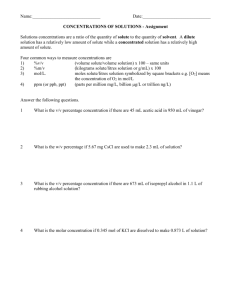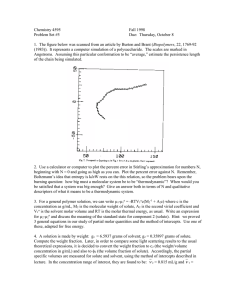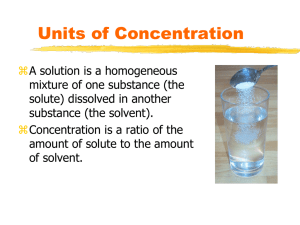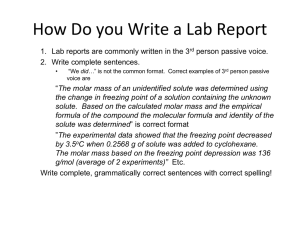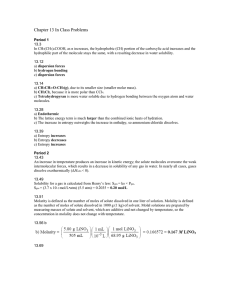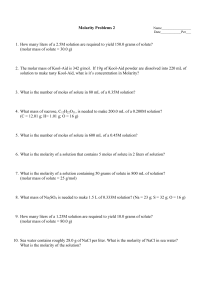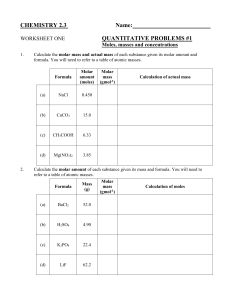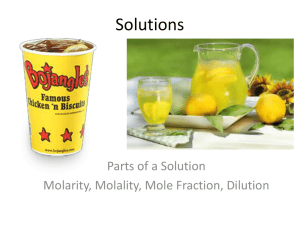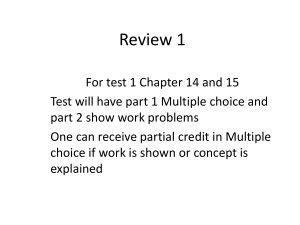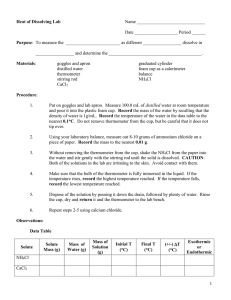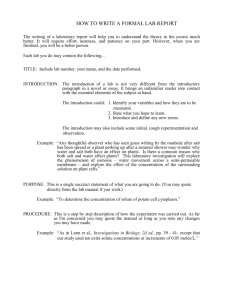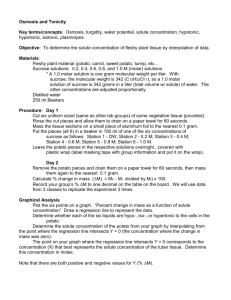Concentration as a Mass/Volume Percent
advertisement
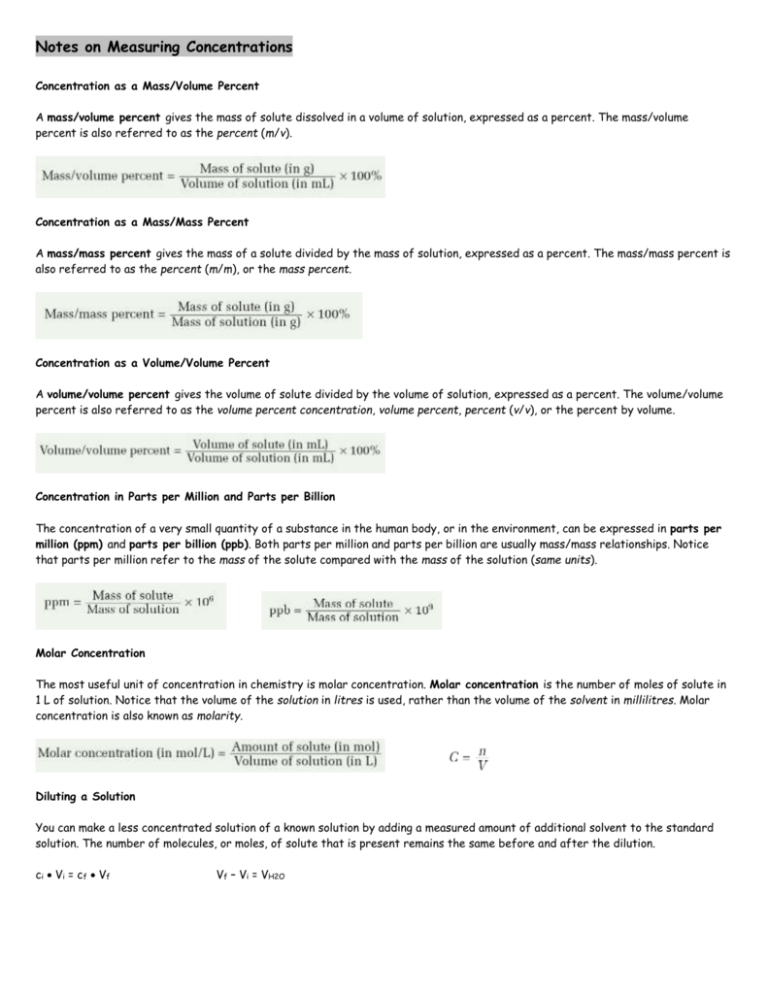
Notes on Measuring Concentrations Concentration as a Mass/Volume Percent A mass/volume percent gives the mass of solute dissolved in a volume of solution, expressed as a percent. The mass/volume percent is also referred to as the percent (m/v). Concentration as a Mass/Mass Percent A mass/mass percent gives the mass of a solute divided by the mass of solution, expressed as a percent. The mass/mass percent is also referred to as the percent (m/m), or the mass percent. Concentration as a Volume/Volume Percent A volume/volume percent gives the volume of solute divided by the volume of solution, expressed as a percent. The volume/volume percent is also referred to as the volume percent concentration, volume percent, percent (v/v), or the percent by volume. Concentration in Parts per Million and Parts per Billion The concentration of a very small quantity of a substance in the human body, or in the environment, can be expressed in parts per million (ppm) and parts per billion (ppb). Both parts per million and parts per billion are usually mass/mass relationships. Notice that parts per million refer to the mass of the solute compared with the mass of the solution (same units). Molar Concentration The most useful unit of concentration in chemistry is molar concentration. Molar concentration is the number of moles of solute in 1 L of solution. Notice that the volume of the solution in litres is used, rather than the volume of the solvent in millilitres. Molar concentration is also known as molarity. Diluting a Solution You can make a less concentrated solution of a known solution by adding a measured amount of additional solvent to the standard solution. The number of molecules, or moles, of solute that is present remains the same before and after the dilution. c i Vi = c f Vf Vf – Vi = VH2O



